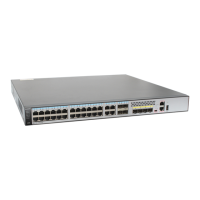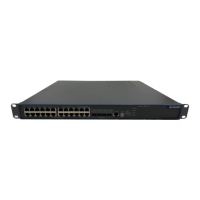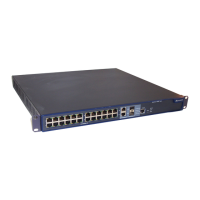After receiving an NDP packet from the neighbor, the device compares the contents of the packet
with those of a corresponding entry in the NDP table and updates the entry.
NTDP
In HGMP, Network Topology Discovery Protocol (NTDP) packets are used to collect
information about topologies. According to the neighbor information in the NDP table, the
device sends and forwards requests for topology collection, and then collects entries in the NDP
table of each device in a certain network segment.
After receiving an NTDP topology request packet, the device sends an NTDP response packet
immediately. At the same time, the device forwards the received NTDP packet to other interfaces
according to NTDP forwarding rules.
Roles in a Cluster
HGMP defines four roles in a cluster: administrator switch, member switch, candidate switch,
and standby switch.
NOTE
Currently, the S5700 cannot function as a standby switch.
l An administrator switch is the management device in a cluster. To ensure the
communication between devices in and out of the cluster, you need to assign a public IP
address to the administrator switch.
l A member switches is the member device in a cluster. The member switch is managed by
the administrator switch that acts as an agent. Therefore, the public IP address is not required
for a member switch.
l A candidate switch is a device that has the cluster function but does not join any cluster.
l A standby switch is the backup administrator switch in a cluster. When the administrator
switch fails, the standby switch automatically serves as the administrator switch.
You can determine the role of a switch in a cluster. Each of the four roles, however, can be
changed according to certain rules.
Basic Cluster Management
The basic cluster management includes the following items:
l Establishment of a cluster management domain
l Addition and deletion of a member
l Status transition of a member
l Communication in the cluster
l Switchover between the administrator switch and the candidate switch
l Display of the topology
l Modification of the cluster management configuration
l Automatic configuration of SNMP
Quidway S5700 Series Ethernet Switches
Configuration Guide - Network Management 3 HGMP Configuration
Issue 01 (2011-10-26) Huawei Proprietary and Confidential
Copyright © Huawei Technologies Co., Ltd.
83

